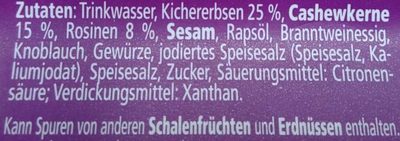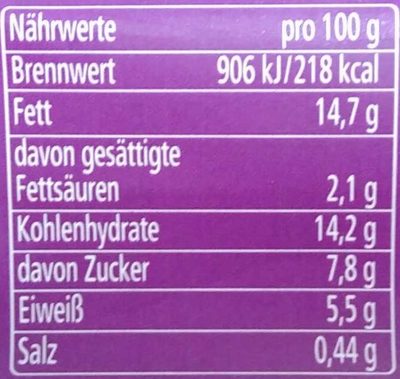Humus Cashew & Rosinen - Marhaba - 150 g
This product page is not complete. You can help to complete it by editing it and adding more data from the photos we have, or by taking more photos using the app for Android or iPhone/iPad. Thank you!
×
Barcode: 4045800718218 (EAN / EAN-13)
Common name: Kichererbsenpaste mit Cashewkernen und Rosinen
Quantity: 150 g
Packaging: Plastic
Categories: Spreads
Stores: Sky
Countries where sold: Germany
Matching with your preferences
Environment
Packaging
Transportation
Report a problem
Data sources
Product added on by kakao
Last edit of product page on by packbot.
Product page also edited by anticultist.
If the data is incomplete or incorrect, you can complete or correct it by editing this page.









